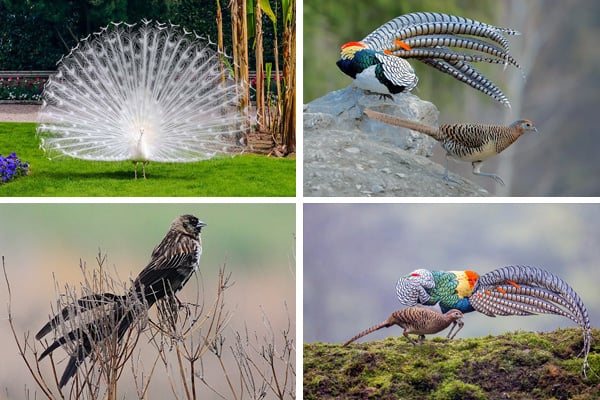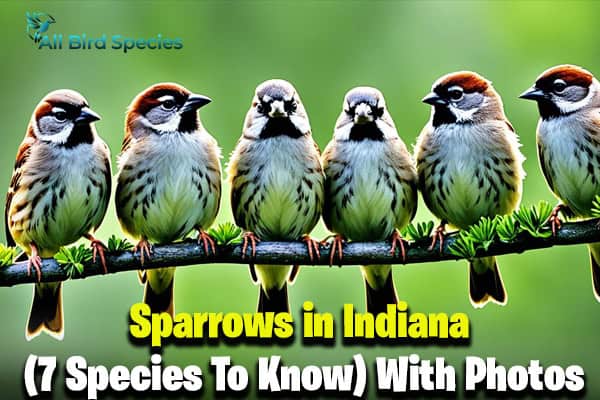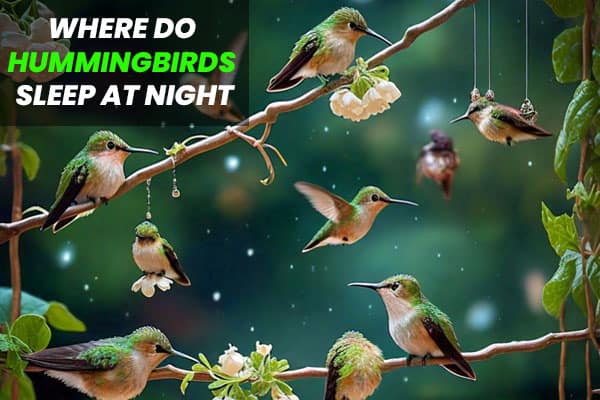10 Peacocks Birds: A Guide to Birds Similar to Peacocks
Do you love peacocks and their dazzling feathers? In this guide, I will show you beautiful birds similar to equally stunning peacocks. You will learn about their colorful plumage, graceful tails, and fascinating behavior. This is the ultimate resource for anyone who admires the beauty of peafowls and their relatives.
Key Takeaways:
- Birds similar to peacocks showcase vibrant long tail feathers plumage and elegant tail feathers.
- bird species resemble peacocks in their beauty and appearance.
- The green peafowl, congo peafowl, and Spalding peafowl are some examples of these stunning bird species.
- Other birds with similar qualities include the white peafowl, impeyan pheasant, and long-tailed widowbird, a bird that features sexual dimorphism.
- These bird species can be found in different regions worldwide, from Southeast Asia to Africa and Australia.
10 Amazing Birds Similar to Peacocks
1. Green Peafowl
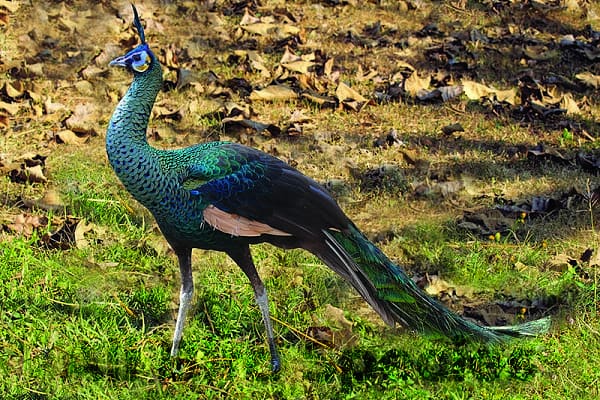
The green peafowl is an exotic bird species native to Southeast Asia. Known for its regal appearance, this magnificent bird showcases striking green and bronze plumage that captures the eye.
2. Congo Peafowl, a bird with long tail feathers
The Congo Peafowl is a bird that looks like a peacock. Peafowl, native to central Africa, is a magnificent bird that showcases distinctive black plumage and contrasting white feathers. Its elegant appearance makes it a captivating sight. Similar to the peacock, the Congo Peafowl exudes beauty and grace.

| Feature | Description |
|---|---|
| Plumage | The Congo Peafowl has a striking black plumage that is adorned with iridescent hues. The feathers shimmer in various shades of blue and green when they catch the light. |
| White Feathers | What distinguishes the Congo Peafowl from other peafowl species is the presence of striking long tail feathers. white feathers on its wings. These white feathers provide a dramatic contrast against its black plumage, making it a truly mesmerizing sight. |
| Habitat | The Congo Peafowl is primarily found in the dense rainforests of central Africa, specifically in the Congo Basin. Its natural habitat consists of lush vegetation and ample water sources, allowing it to thrive in its native environment. |
| Mating Display | During courtship, the male Congo Peafowl showcases its impressive plumage and performs elaborate mating displays to attract a female mate. The male fans out its feathers, creating a stunning visual spectacle. |
The Congo Peafowl’s unique combination of black plumage and white feathers sets it apart from other bird species. Its presence in central Africa adds to the rich biodiversity of the region, making it a true natural wonder.
3. Spalding Peafowl
The Spalding peafowl is a fascinating bird that results from crossbreeding between different peafowl species. Through this process, the Spalding hybrid has been created, showcasing a stunning combination of characteristics inherited from its peacock ancestry. One of the most notable features of the Spalding peafowl is its colorful plumage, which is a visual delight.
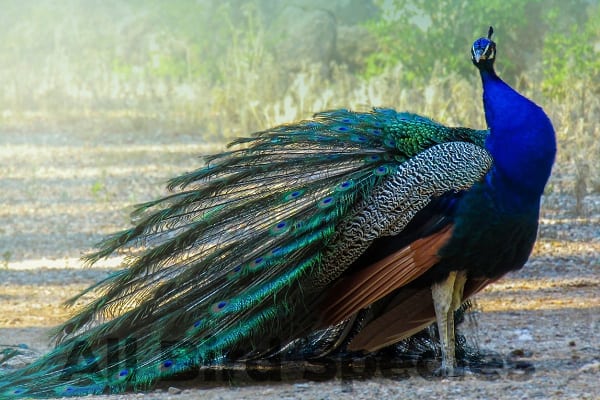
When it comes to birds similar to peacocks then, The Spalding peafowl exhibits a vibrant array of hues, bringing together the best traits of its parent birds. Its feathers display a captivating blend of blues, greens, purples, and gold, creating a mesmerizing spectacle. These striking colors make the Spalding peafowl a sight to behold and a popular choice among bird enthusiasts and collectors.
Crossbreeding is a technique that has been employed to create unique hybrids with desirable traits. In the case of the Spalding peafowl, the intentional blending of different species has resulted in a bird with an enchanting appearance. This process allows for the expression of a diverse range of colors and patterns, making each Spalding peafowl a truly individual and remarkable creature.
Must Read: Blue Birds in Pa
Peafowl Hybridization
Peafowl hybridization is the intentional mixing of different species to create hybrids with distinct characteristics. Crossbreeding has been done for various reasons, such as enhancing certain physical traits, introducing new color variations, or obtaining birds with specific traits desirable for aviculture.
The Spalding peafowl is a prime example of successful hybridization in peafowl breeding. Through careful selection and controlled mating, breeders have achieved hybrids that exhibit the best qualities of their parent species. This intentional mixing of genes has resulted in the creation of beautiful and unique peafowl hybrids like the Spalding.
A Visual Spectacle
The Spalding peafowl’s colorful plumage sets it apart from other birds. Its vibrant feathers are a testament to the fascinating possibilities that can arise through crossbreeding and genetic variation. It stands as a testament to the incredible diversity found in nature and the wonders that can be achieved through deliberate breeding efforts.
“The spalding peafowl showcases the beauty that arises from combining different peafowl species. Its colorful plumage is a true work of art, captivating the hearts of bird enthusiasts around the world.”
| Characteristic | Description |
|---|---|
| Plumage Color | A vibrant blend of blues, greens, purples, and golds |
| Feather Pattern | Varied patterns and markings on the feathers like peacock-pheasants |
| Tail Feathers | Long and elegant, with eye-catching patterns |
| Size | Similar to other peafowl species |
4. White Peafowl
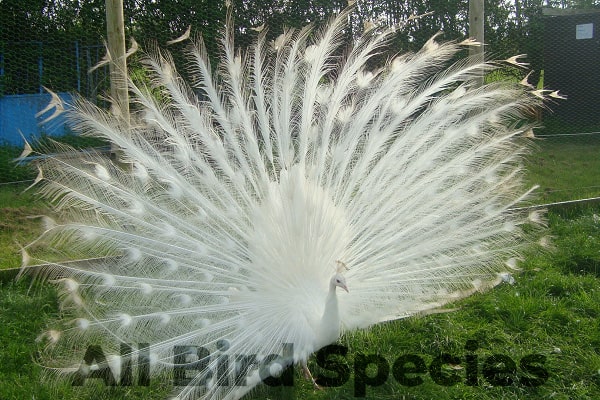
The white peafowl is a rare beauty with its stunning white plumage of the female peacock. Considered an albino variant, it showcases a unique coloration similar to that of the peacock.
5. Impeyan Pheasant
The imperial pheasant, native to the Himalayan region, is a truly captivating bird known for its spectacular iridescent plumage and long crest. With its stunning display of colors, it rivals the beauty of the peacock.
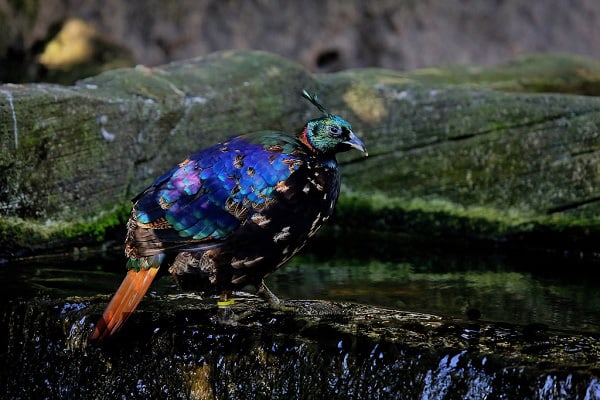
| Appearance | Habitat | Conservation Status |
|---|---|---|
| The imperial pheasant displays
iridescent plumage in shades of deep blue, green, and bronze. The male has a long, ornate crest that adds to its majestic appearance. | Himalayan region, including Bhutan,
India, Nepal, Tibet, and Pakistan, are the native habitat of the imperial pheasant. It is often found in mountainous areas with dense forests like Indian Peafowl. | Although the imperial pheasant is
not currently listed as an endangered species, and habitat loss. |
This exquisite bird’s scientific name, Lophophorus impejanus, a bird that looks like peacocks., is derived from the Greek words “lophos” meaning crest, and “phoros” meaning bearing. It is also known as the Himalayan monal or the impeyan monal.
Also Read: Do Hummingbirds Have Feet?
6. Long-tailed Widowbird
Found in the African grasslands, the long-tailed widowbird is a captivating bird species known for its elongated tail feathers. During courtship displays, the male flaunts its impressive plumage, reminiscent of the peacock’s majestic tail feathers. The elongation of the male’s tail feathers plays a crucial role in attracting a mate during the breeding season.
Male long-tailed widow birds similar to peacocks possess tail feathers that can reach up to three times their body length, creating a visually striking and intricate display. This unique adaptation helps the males stand out and demonstrate their strength and genetic fitness to potential mates. The elongated tail feathers play a significant role in courtship rituals, attracting female widowbirds and ensuring successful mating.

Not only do the elongated tail feathers enhance the aesthetic appeal of the male widowbirds, but they also serve as a symbol of good health and genetic quality. Females are naturally drawn to males with longer and more vibrant tail feathers, as they indicate superior genetic traits and overall fitness.
The courtship display of the long-tailed widowbird involves impressive aerial acrobatics, as males soar high in the sky, showcasing their elongated tail feathers and emitting distinct calls to catch the attention of nearby females. This extravagant display is a testament to the bird’s stamina, agility, and breeding prowess.
The long-tailed widowbird’s courtship rituals are not only visually captivating but also serve as an essential part of the species’ reproductive cycle. These elaborate displays play a crucial role in pair bonding, mate selection, and ensuring the continuation of the species in the African grasslands.
Elongated Tail Feathers: Beauty and Function
The long-tailed widowbird’s elongated tail feathers are not just for visual appeal during courtship displays. They also have functional advantages. The lengthened feathers aid in maneuverability during aerial courtship flights, allowing males to perform intricate movements effortlessly.
Furthermore, the elongated tail feathers also act as a status symbol, indicating the male’s ability to acquire resources and defend his territory effectively. The longer and more vibrant the tail feathers, the more likely the male is to attract high-quality females, ensuring better reproductive success.
You may want to read: Birds With Red Heads
The Long-tailed Widowbird’s Habitat and Distribution
The long-tailed widowbird is primarily found in the African grasslands, a vast and diverse ecosystem that spans across multiple countries in Africa. These grasslands provide the perfect habitat for the species, offering ample open spaces for courtship displays and suitable nesting sites.
The species is native to sub-Saharan Africa, with its range extending from countries such as South Africa and Zimbabwe to Kenya and Uganda. Within this region, the long-tailed widowbird inhabits various grassland habitats, including savannas, wetlands, and open woodlands.
The availability of grasses and other vegetation in the African grasslands provides an abundant food source for the long-tailed widowbirds. The birds primarily feed on seeds and insects, utilizing their long bills to forage efficiently. This adaptability to varied diets allows the species to thrive in their grassland habitats.
| Common Name | Scientific Name | Distribution |
|---|---|---|
| Long-tailed Widowbird | Euplectes progne | Sub-Saharan Africa |
7. Lady Amherst’s Pheasant
Native to China and Myanmar, the Lady Amherst’s Pheasant is a captivating bird that showcases vibrant feathers in stunning patterns, resembling the majestic peacock. Its vibrant plumage and intricate markings make it a sight to behold.
The Lady Amherst’s Pheasant is known for its long and dramatic tail feathers, which add to its striking appearance. These feathers feature a beautiful combination of deep blues, iridescent greens, and fiery oranges, creating a mesmerizing display of colors.

This exotic birds similiar to peacocks is often found in the dense forests and mountainous regions of China and Myanmar, like Indian Peafowls. It prefers habitats with thick vegetation and plenty of cover. The male pheasants are particularly known for their extravagant plumage, using it to attract mates during courtship displays.
Birds Similar to the peacocks, Lady Amherst’s Pheasant uses its vibrant feathers as a way to communicate. During courtship rituals, males will spread their tail feathers, creating an impressive fan-like display to attract females. This vibrant show of feathers is a testament to the bird’s beauty and charm.
“The Lady Amherst’s Pheasant is a dazzling bird that commands attention with its vibrant plumage and intricate patterns.”
If you ever have the opportunity to observe Lady Amherst’s Pheasant in the wild or captivity, you’ll be captivated by its grandeur and elegance. Its resemblance to the peacock makes it a popular choice for bird enthusiasts and nature lovers alike.
Fascinating Facts about the Lady Amherst’s Pheasant
- The Lady Amherst’s Pheasant was named after Lady Sarah Amherst, the wife of William Pitt Amherst, a British governor-general in India.
- These pheasants are highly social birds and are often found in small flocks.
- In addition to their vibrant feathers, Lady Amherst’s Pheasants have unique facial patterns and long, pointy crests.
- They primarily feed on seeds, insects, and plant matter found on the forest floor.
Overall, the Lady Amherst’s Pheasant birds similar to peacocks is a true marvel of nature. Its vibrant feathers, reminiscent of the peacock, and its regal presence make it a captivating species. Whether admired in the wild or in captivity, this bird truly stands out with its beauty and charm.
| Feature | Description |
|---|---|
| Scientific Name | Chrysolophus amherstiae |
| Habitat | Forests and mountainous regions of China and Myanmar |
| Diet | Seeds, insects, and plant matter |
| Size | Approximately 90-110 cm (35-43 inches) in length |
| Plumage | Vibrant colors such as blues, greens, and oranges |
8. Long-tailed Paradise Whydah
Found in the sub-Saharan region of Africa, the long-tailed paradise whydah are captivating birds similar to peacocks with an extensive long tail like peacocks. extravagant tail that surpasses even that of the peacock in length. This exquisite species, scientifically known as Vidua paradisaea, showcases a remarkable display of long, flowing feathers that make it a true spectacle of nature.
The striking tail of the long-tailed paradise whydah is an impressive adaptation that enhances its courtship displays and attracts potential mates. The male’s tail, which can measure up to two feet in length, is adorned with beautiful patterns and vibrant colors, captivating observers with its sheer grandeur. This remarkable trait serves as a visual signal of the male’s fitness and reproductive success.

However, what sets the long-tailed paradise Whydah apart goes beyond its extravagant tail. This bird is also known for its unique reproductive strategy called brood parasitism. Rather than building its own nest and raising its young, the female long-tailed paradise whydah lays its eggs in the nests of other bird species, raising the whydah chicks as their own.
| Birds Similar to Peacocks Species | Long-tailed Paradise Whydah |
|---|---|
| Scientific Name | Vidua paradisaea |
| Region | Sub-Saharan Africa |
| Tail Length | Up to two feet |
| Reproductive Strategy | Brood Parasitism |
This nesting behavior allows the long-tailed paradise whydah to conserve energy that would otherwise be spent on building nests and rearing young. By utilizing the nests of other bird species, it can focus its energy on attracting mates and maintaining its elaborate tail feathers, ultimately increasing its chances of passing on its genes to future generations.
The long-tailed paradise whydah’s unique combination of an extravagant tail and brood parasitism makes it a fascinating avian species in the rich biodiversity of sub-Saharan Africa. Its captivating beauty and intriguing reproductive strategy contribute to the incredible diversity of nature’s wonders.
Must Visit: Types Of Finches in Michigan
9. Superb Lyrebird
The superb lyrebird is a fascinating species native to Australia, known for its exceptional ability to mimic various sounds and its unique plumage. While not directly related to the peacock, the superb lyrebird’s appearance captures a similar essence of elegance and beauty.

One of the most remarkable traits of the superb lyrebird is its mimicry skills. This bird can imitate a wide range of sounds, including the calls of other birds, human voices, and even the sounds of camera shutters and chainsaws. It is truly astonishing to witness these mimicry performances, highlighting the incredible vocal range and adaptability of this bird.
Aside from its mimicry abilities, the superb lyrebird also sports a captivating plumage. The male lyrebird showcases a long, elegant tail with intricate patterns of feathers, resembling the peacock’s beautiful train. This unique plumage adds to the bird’s allure and makes it a stunning sight in its natural habitat.
Native to the diverse landscapes of Australia, the superb lyrebird can be found in rainforests, woodlands, and scrublands. Its ability to blend into different environments while displaying its splendid plumage and mimicry skills is a testament to its adaptability and survival prowess.
Don’t forget to read about Black and White Birds in Michigan
FAQ’s About Birds Similar to Peacocks
Q1: What is the blue bird that looks like a peacock?
The blue bird that resembles a peacock is likely the Indian Peafowl, also known as the Indian Blue Peafowl (Pavo cristatus). The male, called a peacock, has vibrant blue and green plumage.
Q2: What is the bird that looks like a white peacock?
The bird that resembles a white peacock is most likely the White Peafowl (Pavo cristatus), a color variant of the Indian Peafowl. It has all-white plumage instead of the typical blue and green colors.
Q3: What kind of pigeon looks like a peacock?
The Victoria Crowned Pigeon (Goura victoria), native to Papua New Guinea, is a pigeon species that shares a visual resemblance to a peacock due to its striking blue and white plumage and ornate crown of feathers.
Q4: What kind of bird is a peacock?
A peacock is a type of bird known as the Indian Peafowl (Pavo cristatus). It is a large and colorful bird, with males (peacocks) characterized by their vibrant and iridescent plumage, while females (peahens) have more subdued colors.

